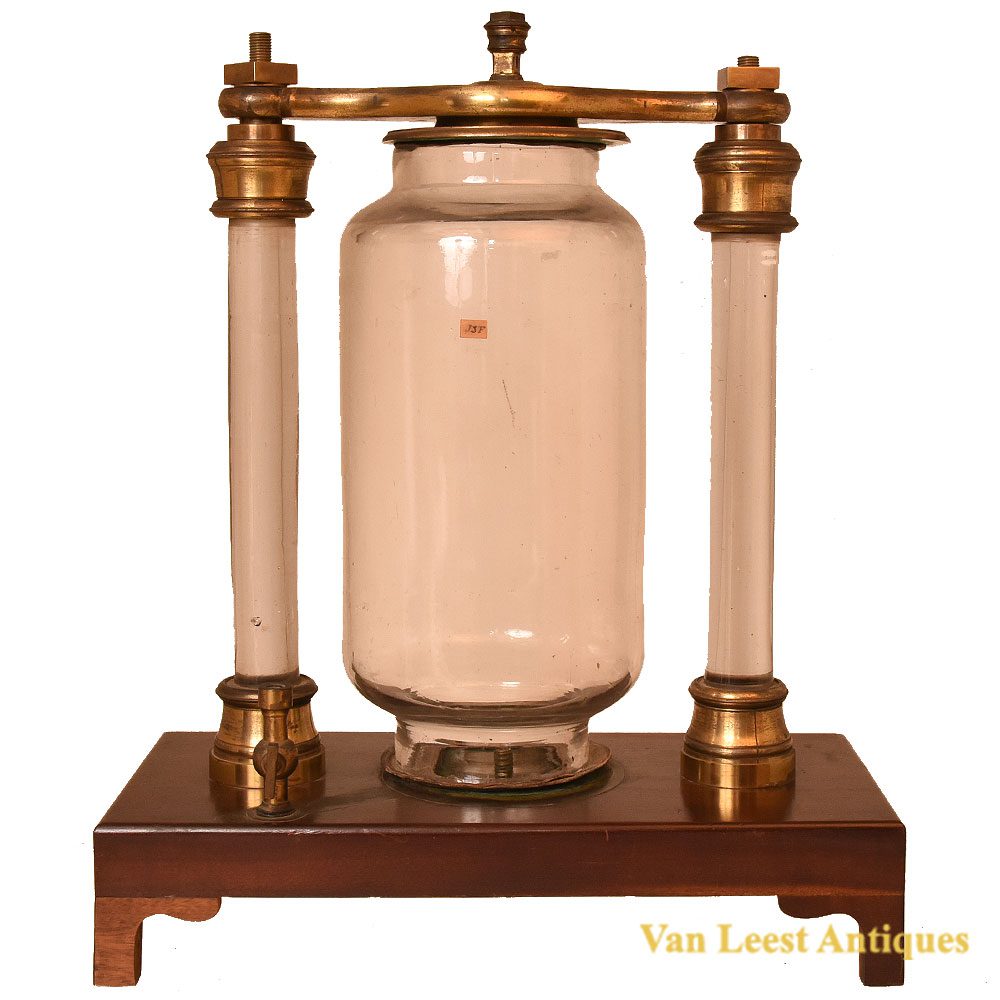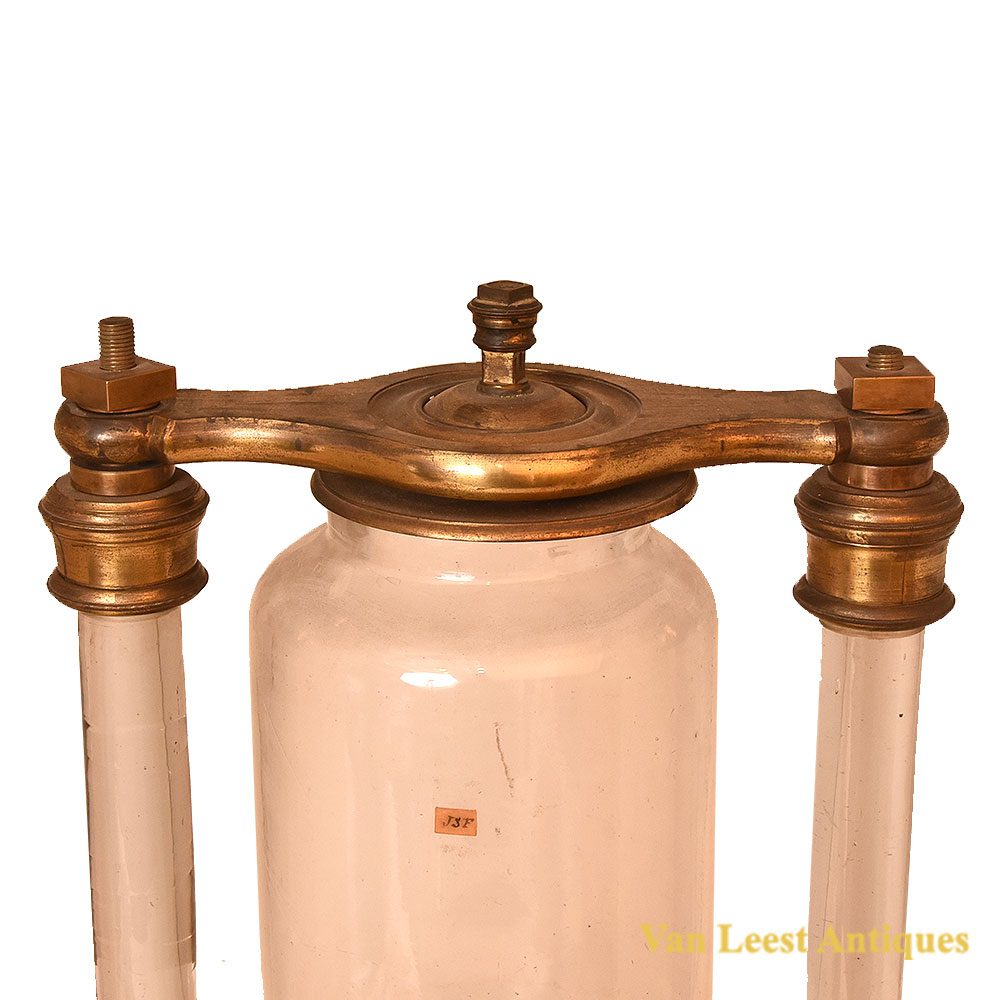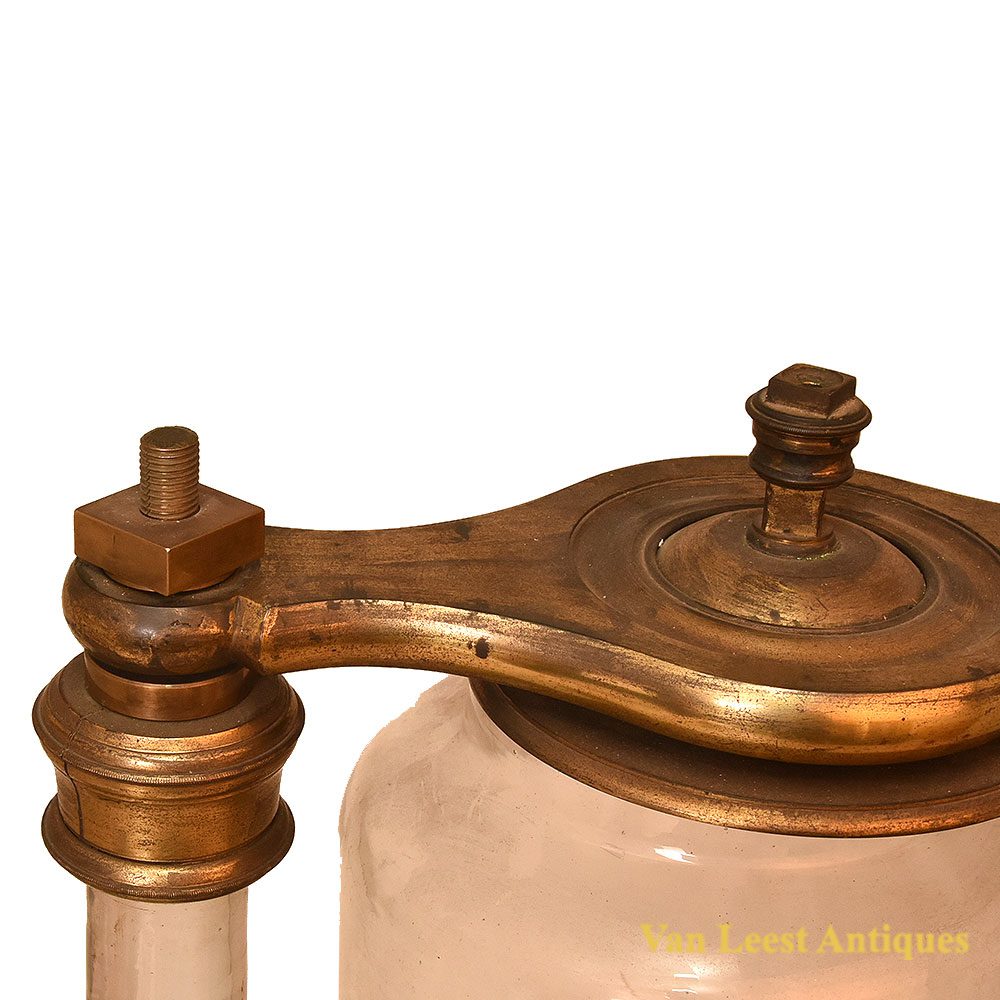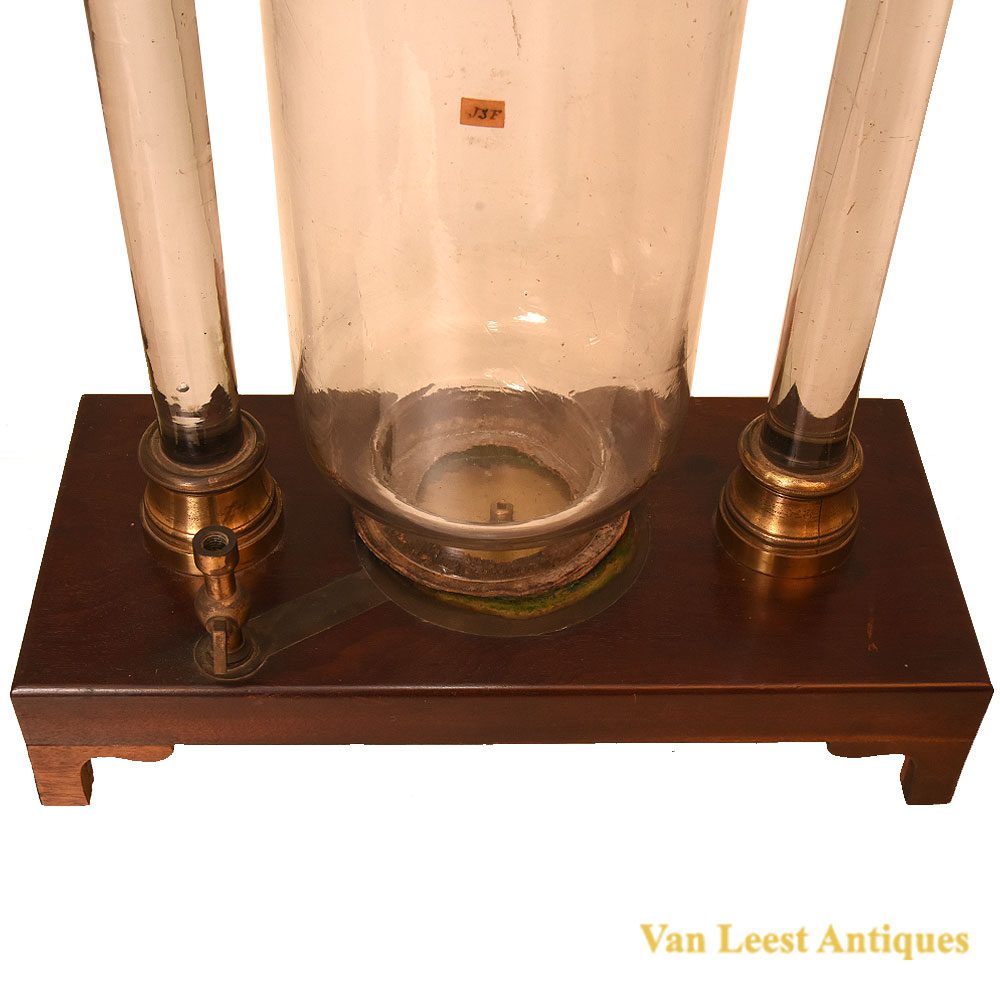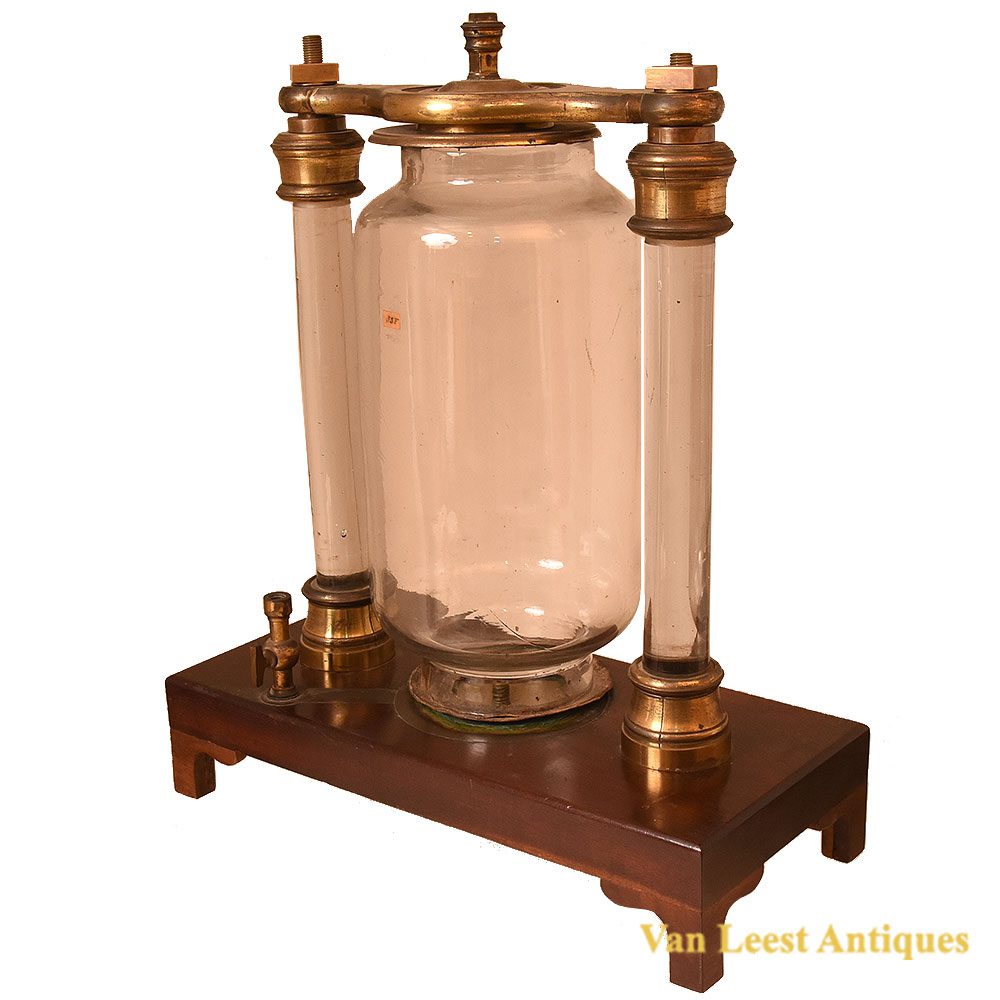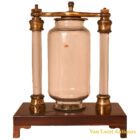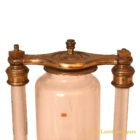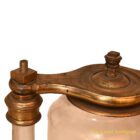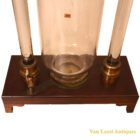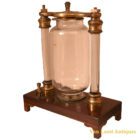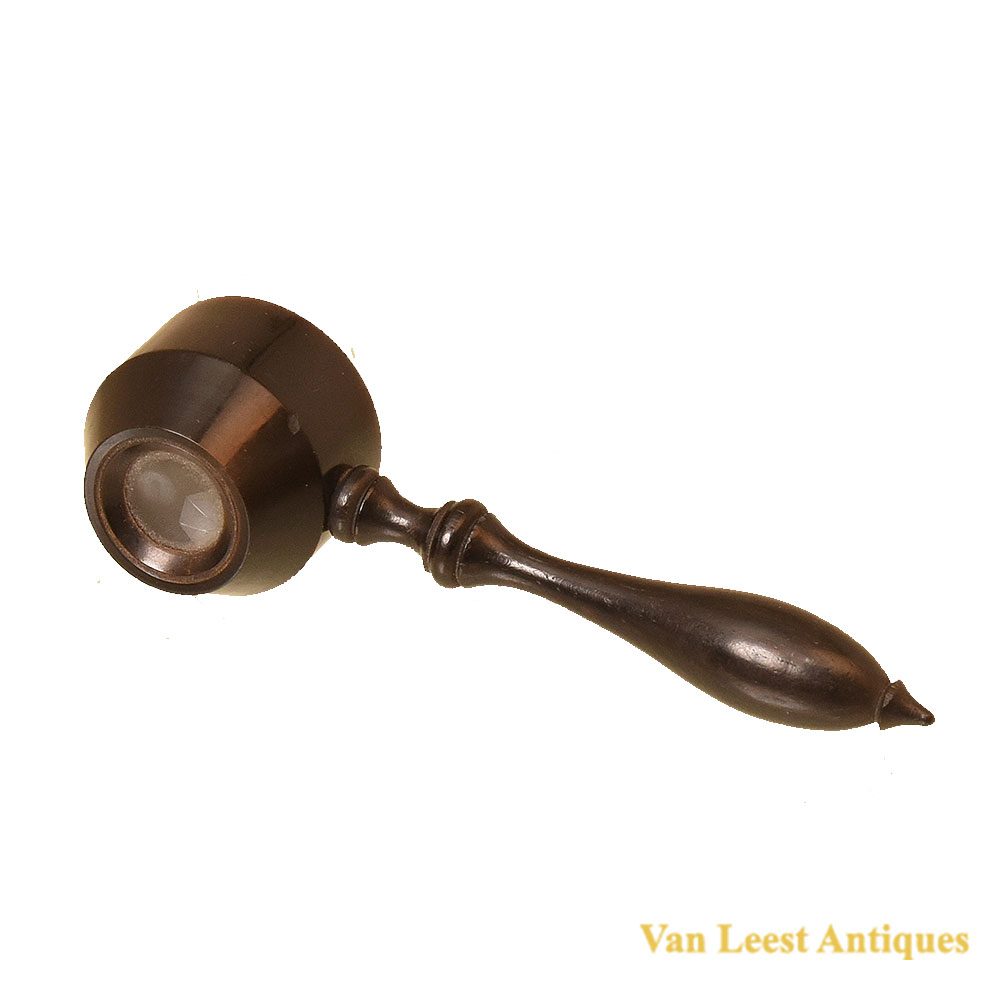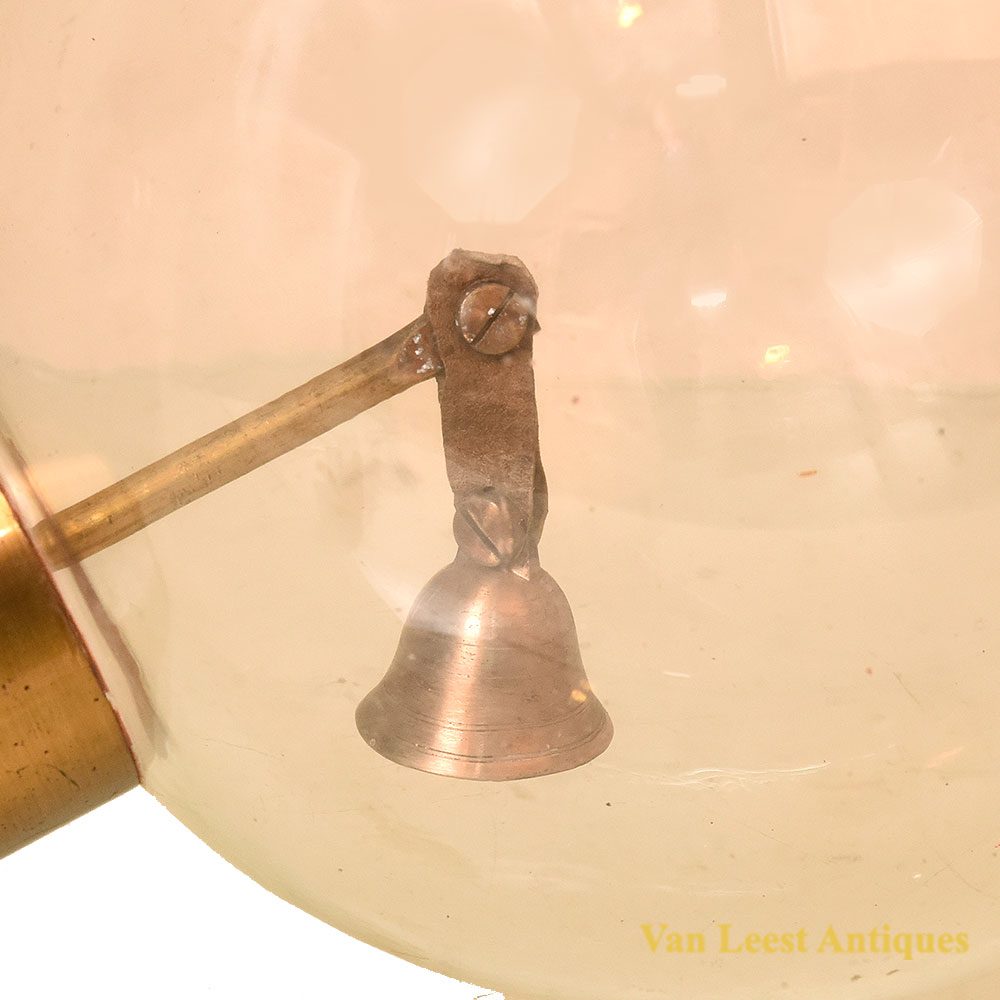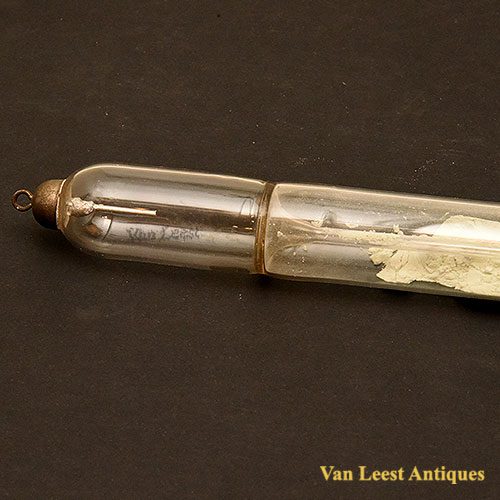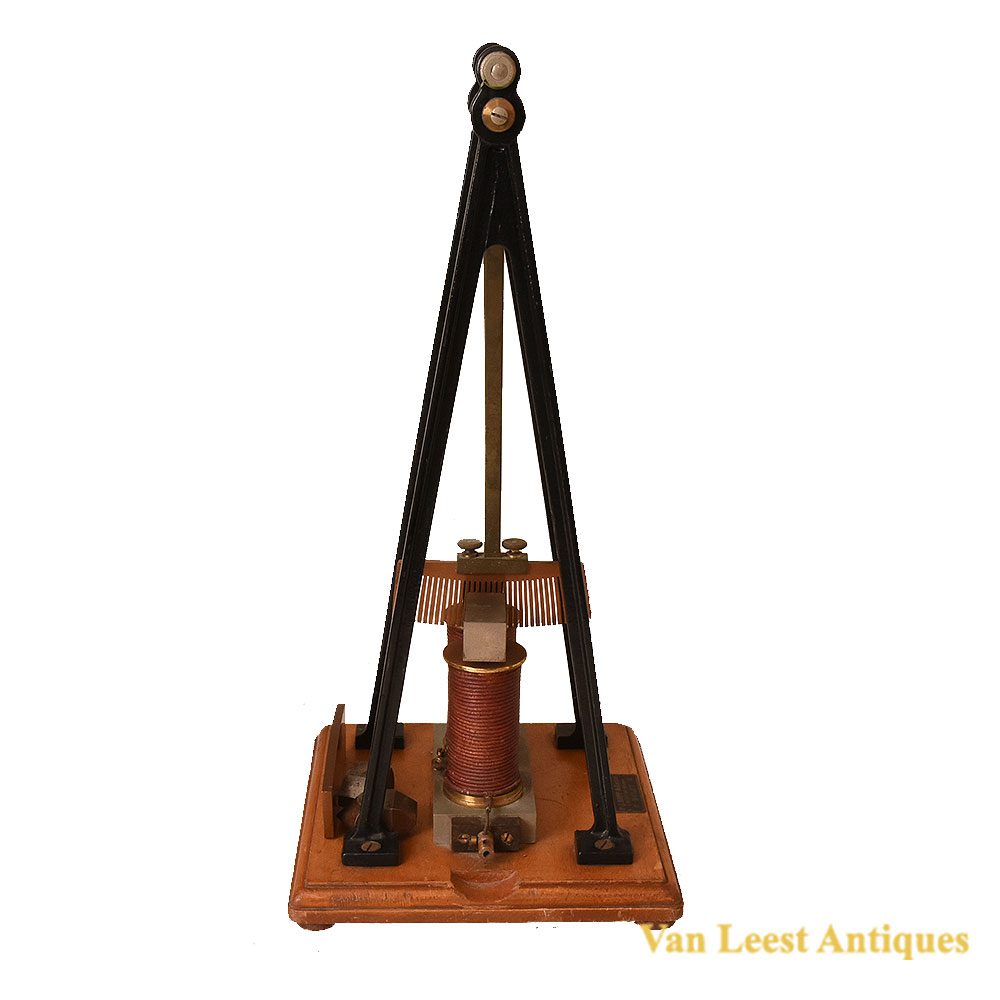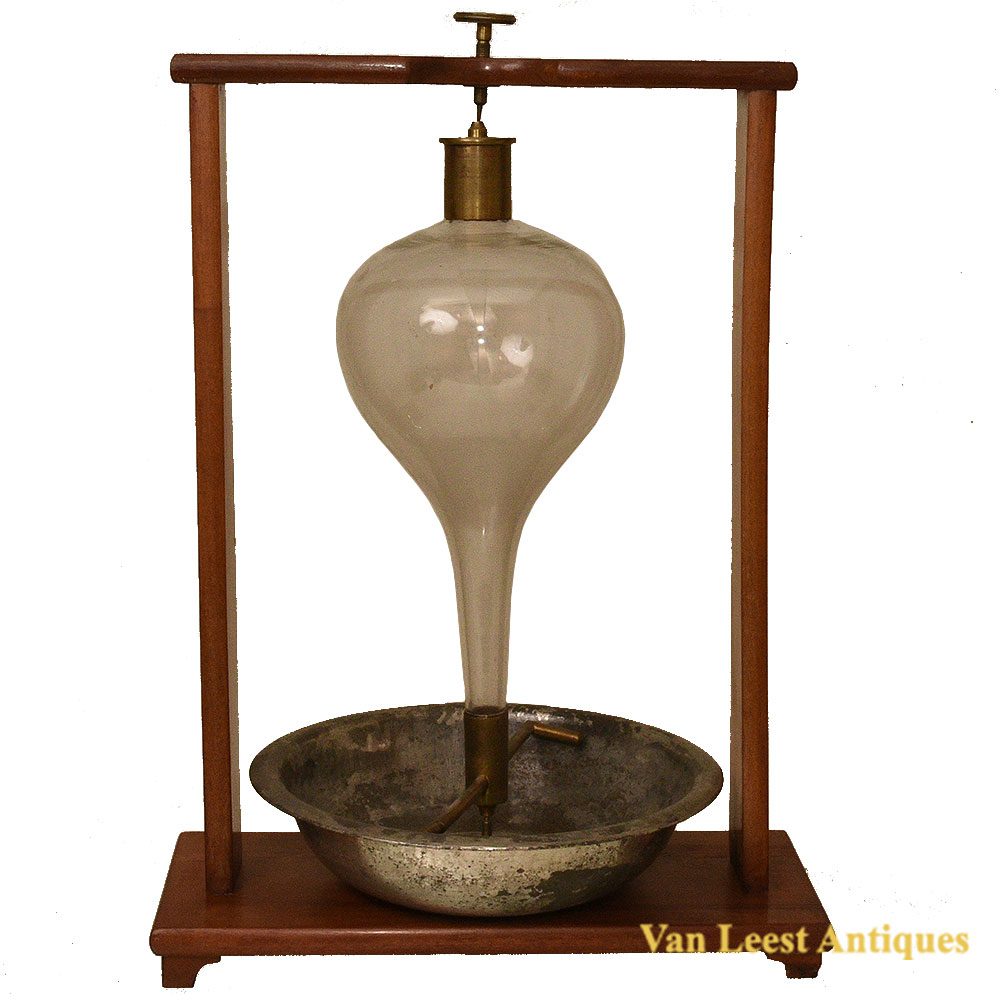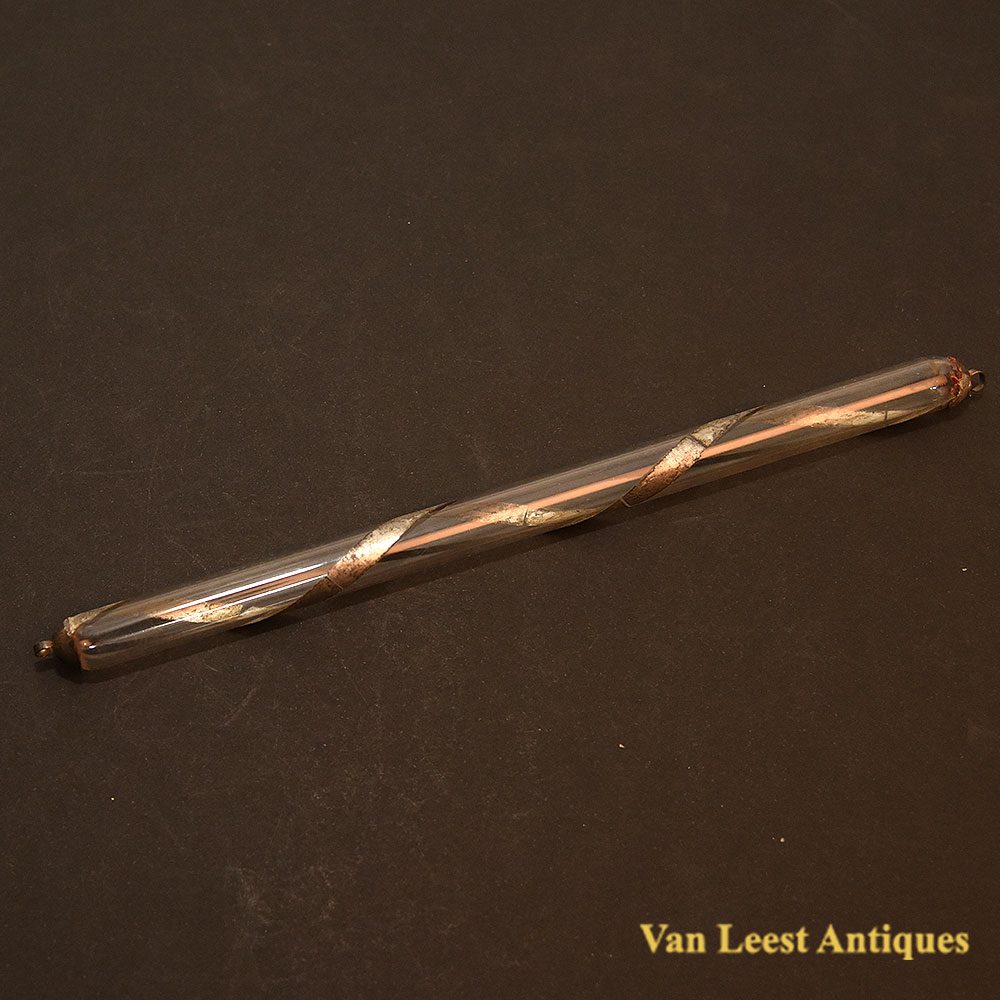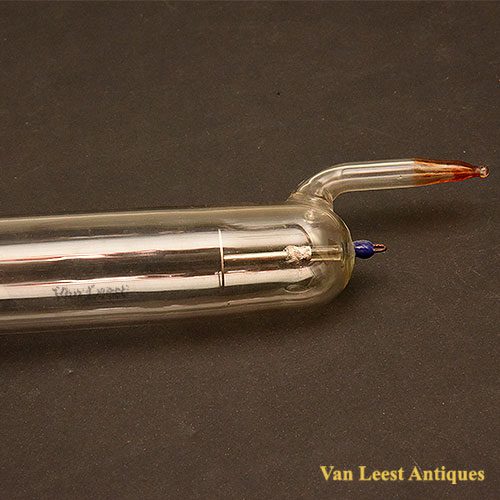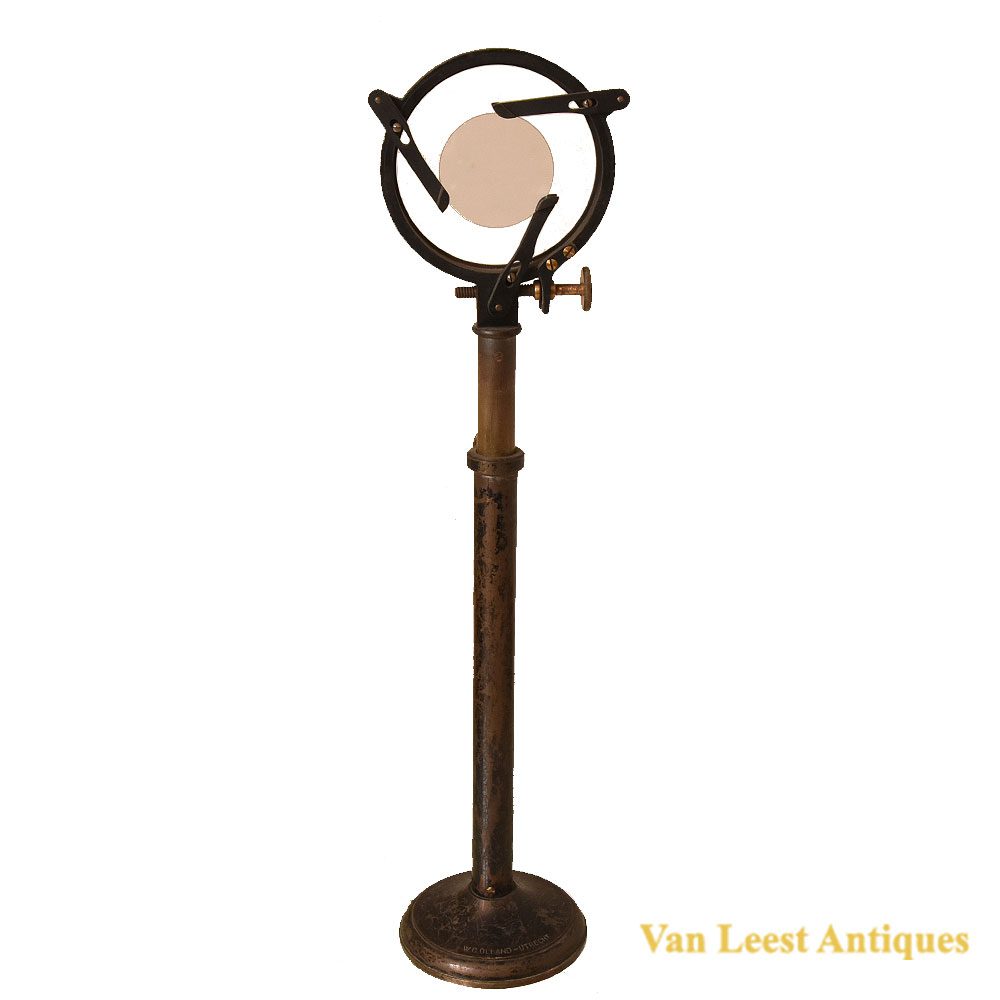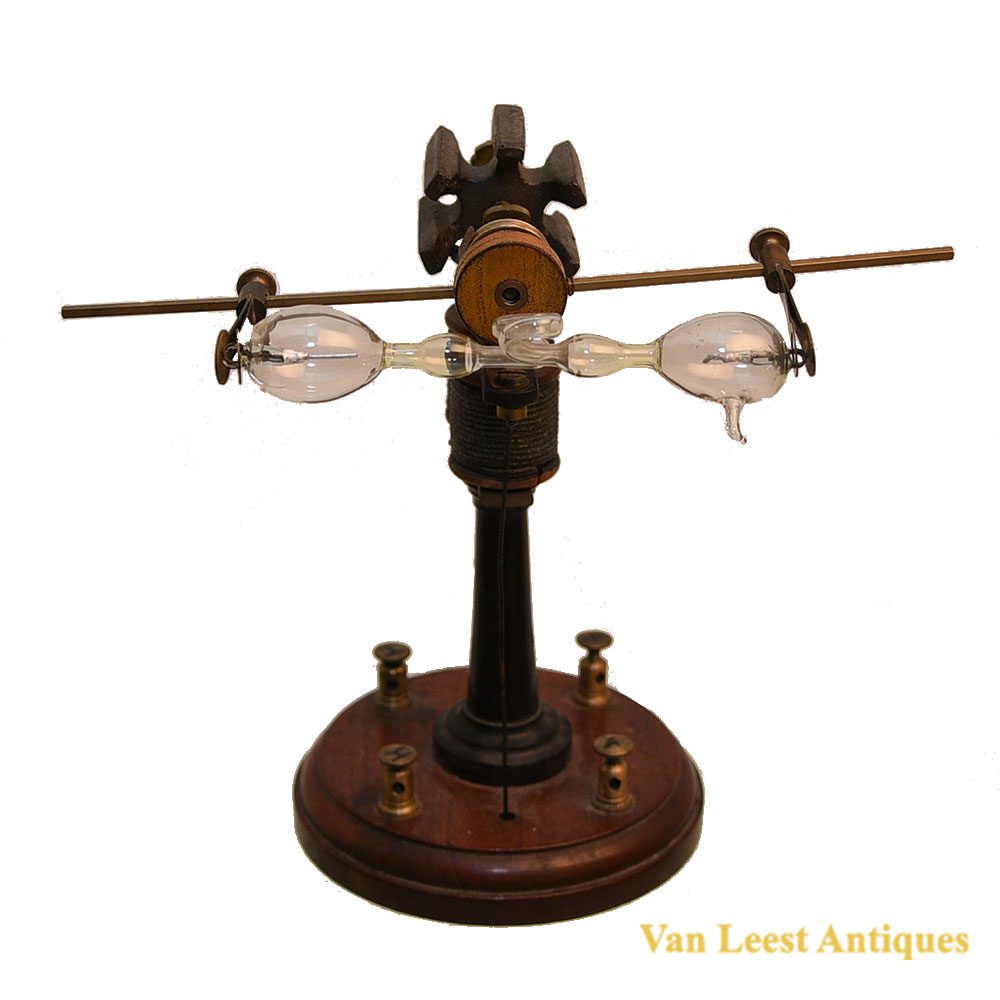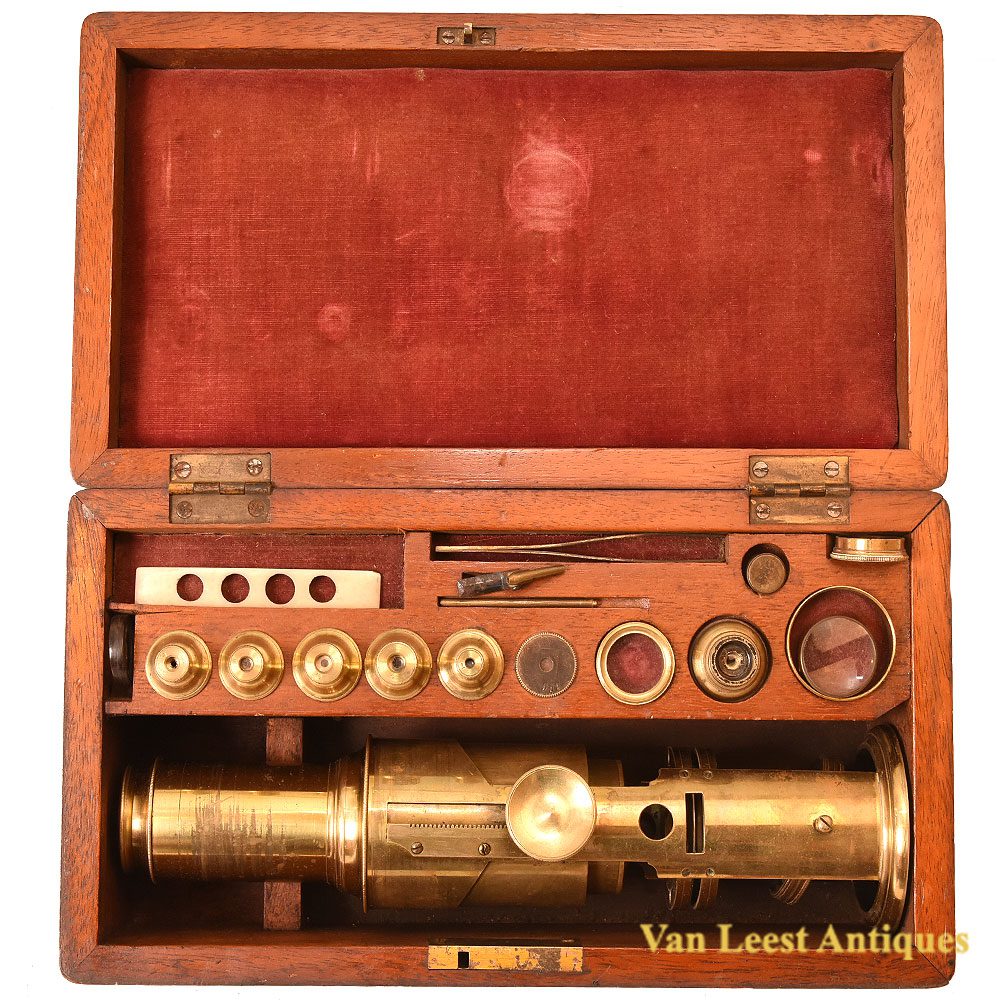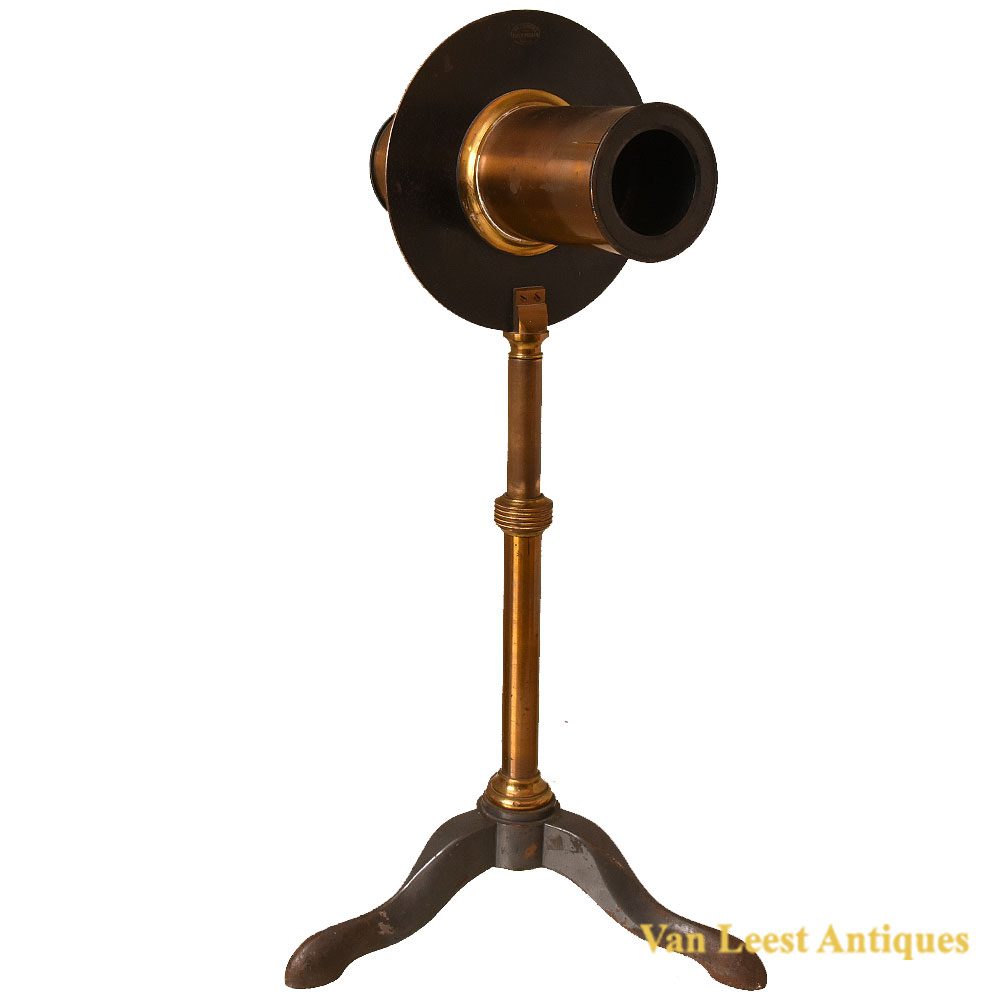18th century Compression Vessel
On application
This test combination arises from a wooden stand with two screws in the bottom. To this screws two glass pillars are attached. In the middle a connection is made to the vacuum pump. A glass cylindrical tube is placed in the middle of the pillars and held in position with a brass plate when screwed tight together with the two pillars. On top of the cylinder a hole to which the test object would be appear for example a hook. Similar constructions are depicted in the Physices elementa mathematica of G.J. ‘s Gravesande and Francis Hauksbee’s Physico-Mechanical Experiments on Various Subjects.
In 1703 Francis Hauksbee proved by showing that a vacuum exists at the royal society at a similar vessel, it is now in the science museum. Contemporary book outline that this compression vessel could show different experiments with vacuum, for example the clockwork bell. If the air was removed from the glass chamber, the noise made by the bell became fainter. In a container where the air was compressed, the bell remained audible but the strokes of the hammer were slowed down.
Dimensions: 20,3 x 43,3 x 52 cm.
